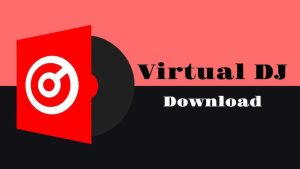
Sketch 2025: The Future of Creativity and Innovation
Introduction
Google SketchUp As we step further into the 21st century, the landscape of art and creativity continues to evolve at an unprecedented pace. With technological advancements, changing societal norms, and a growing emphasis on sustainability, the creative industries are experiencing a renaissance. This article will explore the anticipated shifts in the art world by 2025, covering the integration of technology, the influence of social movements, the rise of interdisciplinary practices, and the importance of sustainable and ethical practices in art.
Google SketchUp The Integration of Technology in Art

Digital Art and NFTs
Google SketchUp By 2025, digital art is expected to become even more mainstream. The rise of Non-Fungible Tokens (NFTs) has already transformed how artists sell and monetize their work. NFTs provide creators with a way to authenticate and sell digital art, allowing them to maintain ownership while reaching global audiences. As this trend continues, we’ll likely see a new generation of artists emerge, skilled in digital design, animation, and interactive media.
Moreover, advancements in Virtual Reality (VR) and Augmented Reality (AR) will redefine the viewer’s experience. Artists will create immersive environments where audiences can engage with their work in three-dimensional spaces, blurring the lines between physical and digital realms. This could lead to new forms of storytelling and expression that challenge traditional narratives.
AI in Art Creation
Artificial Intelligence (AI) is set to play a significant role in art creation and curation by 2025. Algorithms that can generate music, paint, and even write poetry are already in use. While some might fear that this diminishes the human touch in art, others argue that AI can be a tool for enhancing creativity. Artists may collaborate with AI to explore new creative horizons, pushing the boundaries of what we define as “art.”
AI can also democratize access to art by offering customized experiences based on individual preferences, making art more inclusive. Virtual art exhibitions powered by AI could allow people from all walks of life to engage with artwork that resonates with them personally, fostering a greater appreciation for diverse forms of expression.
Google SketchUp Social Movements and Art
Art as Activism
The role of art as a medium for social change is gaining momentum, and by 2025, we can expect this trend to deepen. Artists are increasingly using their platforms to address pressing social issues such as climate change, racial justice, gender equality, and mental health awareness.
This “art as activism” movement reflects a growing desire among artists to spark conversations and inspire action. Public installations, murals, and performance art pieces are often at the forefront of these movements, transforming public spaces into arenas for dialogue and reflection. As more artists commit to social causes, we will likely see a rise in community engagement initiatives where art projects aim to uplift marginalized voices and foster collective healing.
Diverse Voices in Art
In recent years, there has been a push for more diverse representation in the arts. By 2025, we anticipate a significant cultural shift that amplifies the voices of underrepresented groups, including women, people of color, and the LGBTQ+ community. This diversification will lead to richer storytelling and more varied artistic expressions, challenging the traditional norms that have dominated the art world for centuries.
Art institutions are responding by curating exhibitions that showcase these voices and offering platforms for emerging artists. The move towards inclusivity is not only beneficial for the artists but also enriches the cultural landscape, allowing audiences to experience a broader range of perspectives and narratives.
Interdisciplinary Practices Google SketchUp
Blending Art Forms
Google SketchUp future of art is increasingly interdisciplinary, with artists blending various mediums and practices. By 2025, we will likely see a rise in collaborations between visual artists, musicians, dancers, and technologists. This merging of art forms creates innovative works that engage multiple senses and invite audiences to experience art in new ways.
For example, a visual artist might collaborate with a composer to create an installation that incorporates sound and movement. This type of collaboration fosters creativity by allowing artists to draw inspiration from different disciplines, ultimately leading to the creation of transformative art experiences.
Education and Creative Collaboration
Educational institutions are also embracing interdisciplinary approaches to art education. By 2025, we could see more programs that encourage students to explore various artistic practices and collaborate across disciplines. This will not only produce well-rounded artists but also foster a culture of innovation where creative ideas can flourish.
Workshops, residencies, and community projects that bring together artists from different backgrounds will further enhance collaborative practices, resulting in a vibrant and diverse artistic community.
Sustainability in Art
Eco-Conscious Art Practices
As awareness of climate change and environmental degradation grows, artists will increasingly turn to sustainable practices in their work. By 2025, eco-conscious art movements are expected to flourish, with artists using recycled materials, exploring themes of conservation, and raising awareness about environmental issues.
Art institutions will likely adopt sustainability as a core value, implementing eco-friendly practices in their operations. This includes reducing waste, utilizing renewable energy sources, and promoting eco-friendly exhibitions.
Google SketchUp Art as a Medium for Environmental Advocacy
Artists have a unique ability to communicate complex issues in emotionally resonant ways. By using their work to advocate for environmental causes, artists can engage audiences and inspire action.
Globalization and Cultural Exchange
Google SketchUp Art Beyond Borders
With the globalization of the art world, cultural exchange will continue to thrive by 2025. Artists from diverse backgrounds will collaborate and share their experiences, merging different traditions and styles.
rious artistic traditions.
Virtual platforms will also facilitate international exhibits and collaborations, breaking down geographical barriers. This will allow artists to showcase their work to global audiences, fostering connections that transcend borders and cultural differences.
Conclusion
Google SketchUp By 2025, the art world will likely be a dynamic space
where technology, social movements, interdisciplinary practices, and sustainability converge. Artists will continue to push boundaries, challenging conventions and exploring the role of art in society. The future of creativity holds exciting possibilities,
As we look ahead, the challenge for artists, institutions, and audiences
alike will be to embrace change, foster collaboration, and prioritize inclusivity and sustainability. In doing so, we can help shape a vibrant
transformative future for the arts, one that resonates with the diverse stories and experiences of our time.






Art institutions will likely adopt sustainability as a core value, implementing eco-friendly practices in their operations. This includes reducing waste, utilizing renewable energy sources, and promoting eco-friendly exhibitions.
i am Michael i can seen your website i am impressed to seen this articale . good job naaz